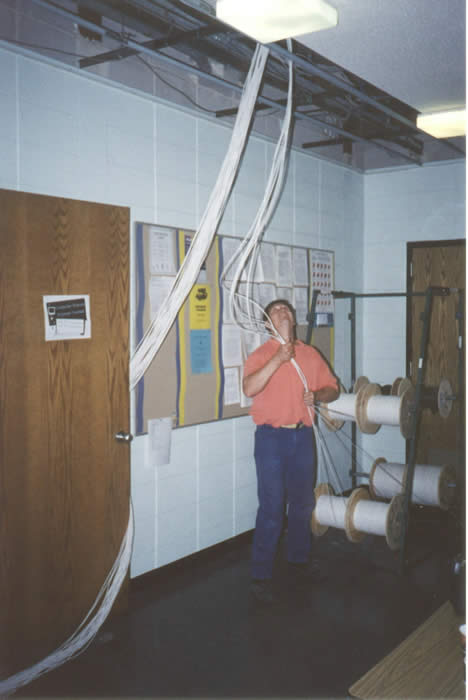inmate work program
wiring the schools
In 1996, Governor Bill Janklow recognized that if South Dakota’s students were going to be able to compete in a global economy they would need the necessary tools and information. The Governor also realized that with access to the Internet, schools would also be able to share resources. He announced a program that would wire every school in South Dakota for the Internet. This would be an extremely valuable asset to a state with a sparse population and limited educational resources.
In order to effectively wire each school in the state’s 176 districts, the initial cost estimate was over 100 million dollars. Obviously, neither the state nor the school districts could afford that. However, Governor Janklow proposed doing the work with minimum-security inmates supervised by Journeyman Electricians. By approaching the project from this angle, two objectives were accomplished. The inmates were given an opportunity to learn a trade that could provide them with the financial ability to become productive members of society upon their release from prison. The use of inmate labor made the project affordable for the state and the school districts.
At the beginning of the project, Governor Janklow brought together the state agencies necessary to make this effort a success. The Department of Corrections (DOC) for inmate manpower, the Department of Education and Cultural Affairs (DECA) to coordinate the school contact and priority systems, and the Bureau of Information and Telecommunications (BIT) to assure the state of the art equipment was procured.
The inmates were hand picked based on the type of crime and sentence they were serving. No sexual offenders or violent offenders were permitted to enter the program. Additionally, all inmates were required to take a GATB test to assure they had the manual dexterity and the basic knowledge necessary to learn the trade. The DOC also hired a project coordinator to provide crew coordination, logistics, inventory control and supply.
Each school applied to DECA and was put on a priority list. The department hired an electrician to provide oversight and assist in the design and layout of the project for each school. The funding for the inmates salary, the electrician contracts, and the material costs was funneled through and managed by DECA. Where necessary, BIT provided technical expertise.
Each individual school district was responsible for providing the housing for the inmates while they were working in that district. They also provided the inmates meals and non-working hours’ supervision. DOC personnel provided a training session for the supervisors prior to the arrival of inmates. The responsibility was primarily to assure the inmates remained on the site and did not have unauthorized visitors or contraband. DOC personnel conducted weekly inspections of the living quarters and property shakedowns for contraband while they were at remote sites. Additionally, not less than half of each crew was required to provide a Urine Sample (UA) weekly.
Click on the picture(s) below to see a larger version.
Inmates prepare a classroom for high speed internet access. |
|



